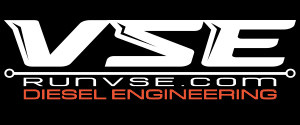GM GEN 4 and 5 Active fuel management (DOD)
Dec 18th 2018
We get a lot of questions surrounding DOD removal/tuning on GM vehicles and we wanted to clear up some misconceptions.
The short story:
GM instituted DOD in the Gen 4 and 5 LS based plattforms for 2 MAIN reasons - fuel mileage increase, and to meet new tier emissions strategies at the time. The idea behind both is to minimize the pumping losses across the throttle blade when the vehicle is a steady state operation by disabling 4 cylinders. This increases the load on the other 4 cylinders causing the throttle blade to step further open. When the throttle blade steps open further manifold vacuum goes down, pumping losses across the throttle blade go down and engine efficiency goes up. In short – engine efficiency and volumetric efficiency (VE) are directly proportional, and VE is the proper term to use.
Oil consumption/lifter and camshaft degradation and/ the dreaded engine tick:
GM uses a complex algorithm to determine when to enable/disable DOD in the motor. When DOD is enabled, the motor goes through a significant transient, causing 4 cylinders to deactivate and cool down and the other 4 cylinders to maintain vehicle load, now at a higher value. We have seen over time testing calibration, researching articles published by GM, discussions with GM engineering, and monitoring 1,000s of our tuned GEN 4/5 vehicles over the years that the oil consumption has been mainly caused by the increase in demand on the crankcase ventilation system from the cooling effects of the deactivated 4 cylinders. When a car comes to us with lower miles on it 50,000 or so with an oil consumption issue and wants tuning, normally tuning (if complete properly) will take care of the problem in a few tanks of fuel. When oil consumption combined with a significate tapping/ticking noise on startup or consistent tapping/ticking noise while running tuning will NOT take care of the problem. The tapping/ticking noise normally has happened from chatter/bounce on the camshaft over time as the 8 lifters associated with DOD have energized with oil to come out of DOD and de-energized to reinstitute DOD. This constant cycling of the lifters over time flatspot the cam and lifters or worse break the roller lifter allowing the needle bearings and other metal to be deposited into the motor. The best case in this scenario is to replace the cam and lifters with a non DOD setup prior to this happening.
Tuning and fuel mileage:
Earlier we mention engine VE and that it goes up in DOD and down in NON DOD. Most of the time we see cars come in with the DOD system already “tuned” out by someone or some device. The customer’s complaint is “The mileage went down”. Without a doubt, 100% your mileage will go down if the DOD system is just “disabled”. GM did (with a lot more equipment than even we have access to) a lot of development to make the VE of this platform efficient. We see on average 1-2 MPG less when the system is only “disabled”. Wideband and catalyst verification proves that the engine not only will lose MPG when the DOD has been turned off but the ECU is still trying to calculate a VE based upon the DOD system being intact even though it has been turned off. Full wideband tuning of the VE tables and associated coefficients in the ECM is the proper way to not only disable DOD properly, but bring fuel mileage above the factory set point. How much is normally determined by fuel type and driving habits. We normally see a 2 mpg improvement if the vehicle is driven and fuel after tuning as it was before tuning.
Will we tune out the DOD system properly? Yes of course we do over 1,000 of them a year, however we normally recommend and then perform full tuning of the ECM/TCM to ensure the customer drives away with more power, using less fuel, and no DOD anymore.
What happens if I have the tick/tapping already? If this is the case we recommend a camshaft and lifter upgrade with tuning. What camshaft will be determined by vehicle usage and driving habits. Call us to have this discussion before ordering. We offer a multitude of custom cam grind and packages to ensure the right decision is made.
Obviously there are other scenarios (scored cylinders, cracked compression rings stuck PCVs ect) however this article is designed to cover the bulk of what we have seen over time, and to clear up some misconceptions surrounding tuning/calibrations.
Any questions call us today
- VSE
